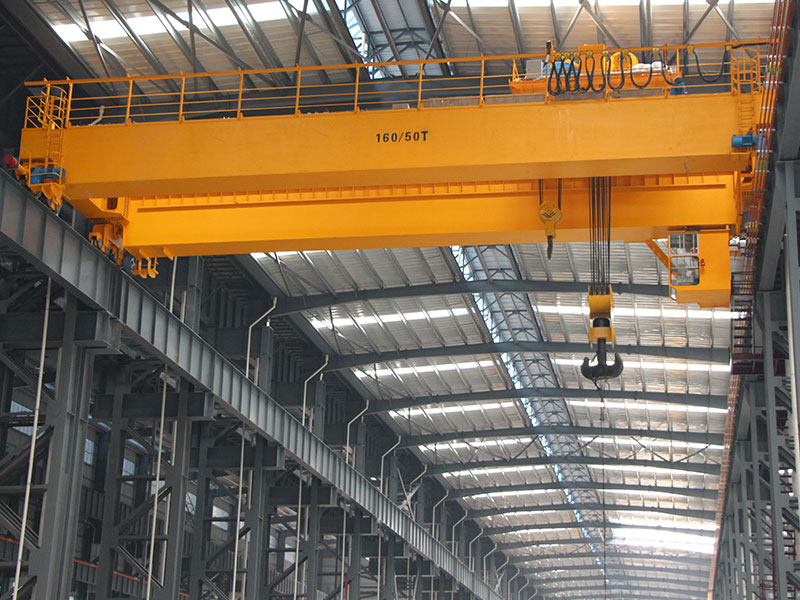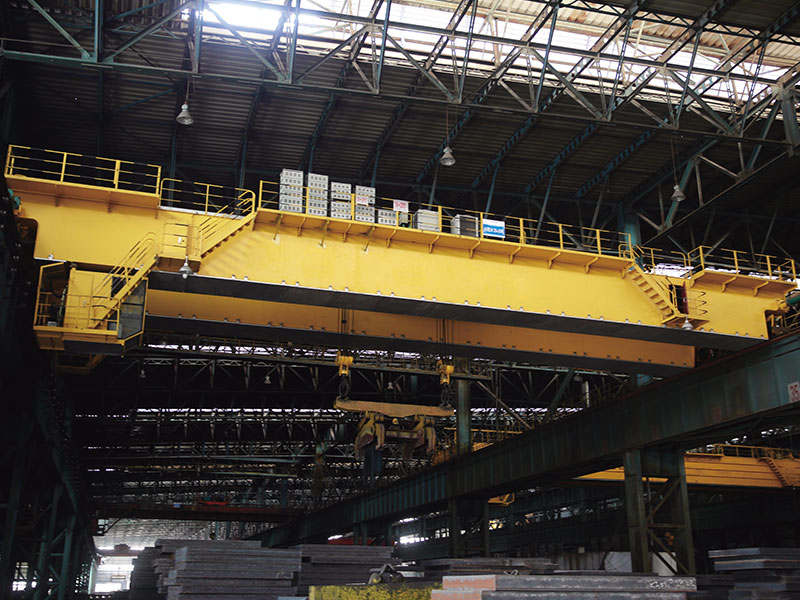When considering the purchase of an overhead crane, many factors influence the overall cost, from the crane’s capacity to its design specifications. One key aspect that is often overlooked but plays a significant role in determining the price of an overhead crane is its lead time. Lead time refers to the amount of time that elapses between placing an order for a crane and the actual delivery or installation of the crane. In this article, we will explore typical lead times for overhead cranes, how they are determined, and the impact they have on the overhead crane cost.

What is Lead Time in the Context of Overhead Cranes?
Lead time is essentially the period that starts when the order is placed and ends when the crane is fully delivered and ready for use. This timeframe includes several stages such as design, manufacturing, quality testing, shipping, and installation. For overhead cranes, lead time can range from several weeks to a few months, depending on several factors, which we will discuss in detail below.
Factors That Influence Lead Time for Overhead Cranes
- Crane Type and Specifications
The type of overhead crane and its specifications (such as load capacity, span, lifting height, and features) significantly affect the lead time. For example, a standard single girder crane with basic features can be manufactured relatively quickly compared to a custom-built double girder overhead crane with advanced features such as anti-sway technology or complex control systems. Customized cranes typically have longer lead times because they require more detailed planning, design, and testing before they are ready for delivery.
- Customization and Design
Overhead cranes often require customization based on the specific needs of the client. These customized features could include specific lifting attachments, control systems, or modifications to fit within an existing infrastructure. The more tailored the design, the longer the lead time will be, as manufacturers need to allocate time for engineering, prototyping, and approval before moving to production.
- Availability of Raw Materials and Components
Lead time can also be affected by the availability of raw materials and components necessary to construct the crane. In some cases, delays in the supply chain can occur if certain materials (such as steel, motors, or other specialized components) are in short supply or subject to long procurement periods. Global supply chain disruptions, such as those caused by economic or political factors, can also extend lead times significantly.

- Production Capacity of the Manufacturer
The production capacity of the overhead crane manufacturer plays a crucial role in determining how long it will take to fulfill an order. Large manufacturers with high production volumes may be able to provide quicker turnaround times, while smaller companies with limited resources may experience longer production schedules. Manufacturers with higher demand and a backlog of orders may also take longer to process and deliver your crane.
- Quality Testing and Certification
Before delivery, overhead cranes undergo rigorous quality testing to ensure they meet safety and operational standards. This process can take time, particularly for cranes designed to handle heavy loads or specialized tasks. Additionally, obtaining necessary certifications from regulatory bodies or safety organizations can also add to the overall lead time.
- Shipping and Delivery
Once the crane has been manufactured, quality-tested, and certified, it needs to be shipped to the customer’s location. The shipping time will depend on the distance between the manufacturer and the end user, the mode of transportation, and any customs or import/export regulations. For international shipments, customs clearance can sometimes add several days or even weeks to the lead time, particularly if the crane is being shipped to a country with complex import procedures.
- Installation and Commissioning
Some overhead cranes require installation services to set up the crane on-site and ensure it is functioning correctly. This stage also influences the lead time and can add a few days to several weeks, depending on the complexity of the installation. On-site assembly, testing, and training for crane operators are typically part of the installation process, contributing to the total lead time.
Typical Lead Times for Different Types of Overhead Cranes
Lead times for overhead cranes can vary significantly based on the type of crane and the level of customization required. Below are general estimates of lead times based on different crane types:
-
Standard Single Girder Overhead Cranes: For basic single girder overhead crane with standard specifications, lead times typically range from 4 to 8 weeks. These cranes are often quicker to manufacture and ship because they require fewer customizations and are built using readily available materials.
-
Double Girder Overhead Cranes: Double girder cranes, which are designed for heavier lifting capacities and more complex applications, often have lead times of 8 to 12 weeks. The increased capacity, along with additional design and engineering work, results in a longer production schedule.
-
Custom and Specialized Overhead Cranes: Custom-built cranes, especially those with unique features such as anti-sway systems, advanced control systems, or cranes built for specific industries (e.g., automotive, aerospace), may have lead times of 12 to 20 weeks or more. The complexity of the design and the need for tailored solutions contribute to these extended lead times.
-
Mobile or Container Gantry Cranes: Gantry cranes and mobile cranes often take 10 to 16 weeks to manufacture due to their large size and the need for specialized materials and design. These cranes are generally more complex and may require additional planning for transportation and assembly.
How Lead Time Affects Overhead Crane Costs
Lead time not only determines when you will receive your crane but can also influence the overall cost. Here are some of the key ways in which lead time can affect overhead crane costs:
-
Price Variability Based on Demand: If there is a high demand for cranes or a backlog of orders at a manufacturer, lead times will increase. This can sometimes drive up prices due to the increased demand for limited manufacturing capacity. Conversely, ordering during off-peak periods when demand is low may result in faster delivery times and potentially lower prices.
-
Rush Orders and Expedited Production: If a customer requires an overhead crane sooner than the standard lead time allows, the manufacturer may offer expedited production services, often referred to as “rush orders.” While this can speed up delivery, it typically comes at a premium cost. Rush orders can be as much as 10% to 30% more expensive due to the extra resources allocated to meet the shorter timeline.
-
Increased Costs Due to Supply Chain Delays: Supply chain disruptions can extend lead times significantly, particularly for manufacturers who rely on international suppliers for materials. Delays in receiving critical components can lead to price increases as manufacturers may need to source alternatives or pay for faster delivery of parts. These added costs are often passed on to the customer.
-
Inventory Costs: If the crane has a long lead time, businesses may face inventory costs, as they will need to prepare their facility and operations for the arrival of the crane. This may involve preparing additional space for storage, allocating labor for installation, and possibly dealing with operational inefficiencies during the waiting period. These indirect costs can add up, particularly if the crane is needed for time-sensitive operations.
-
Longer Operational Downtime: If the overhead crane is essential for your business operations, extended lead times can cause delays in production, resulting in lost revenue during the downtime. The longer the wait, the greater the operational impact and the associated costs of waiting for the crane to arrive.
Conclusion
In conclusion, lead time is a crucial factor in determining the overall cost of purchasing an overhead crane. While shorter lead times may allow businesses to receive their equipment quickly and at a more predictable cost, longer lead times can introduce additional challenges, from higher prices for expedited manufacturing to increased inventory costs during the waiting period. By understanding the factors that influence lead time and considering them in the budgeting and planning phases, businesses can make more informed decisions about when and how to purchase an overhead crane. Whether you are buying a standard crane or a customized solution, managing lead time effectively can help control costs and streamline the purchasing process.